Can Koshik the elephant speak Korean? How have fireflies inspired better LEDs? How can medical tape be made less dangerous? Find out in this Naked Scientists' NewsFlash! Plus, a new technique to watch cancer cells spreading, and the pros and cons of breast cancer screening...
In this episode
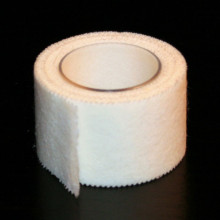
00:21 - Easy Peel Medical Tape
Easy Peel Medical Tape
Medical tape that sticks strongly but peels off with less force than it takes to tear tissue paper has been invented by scientists in America.
Medical adhesives cause millions of injuries each year, often when used on frail elderly skin, or on tender newborns and premature babies. This happens because the present generation of medical tapes consist of a strong backing, usually made of PET, applied to an adhesive. And because it takes more force to pull the tape off than it takes to physically tear skin, the result is frequently trauma and even scarring.
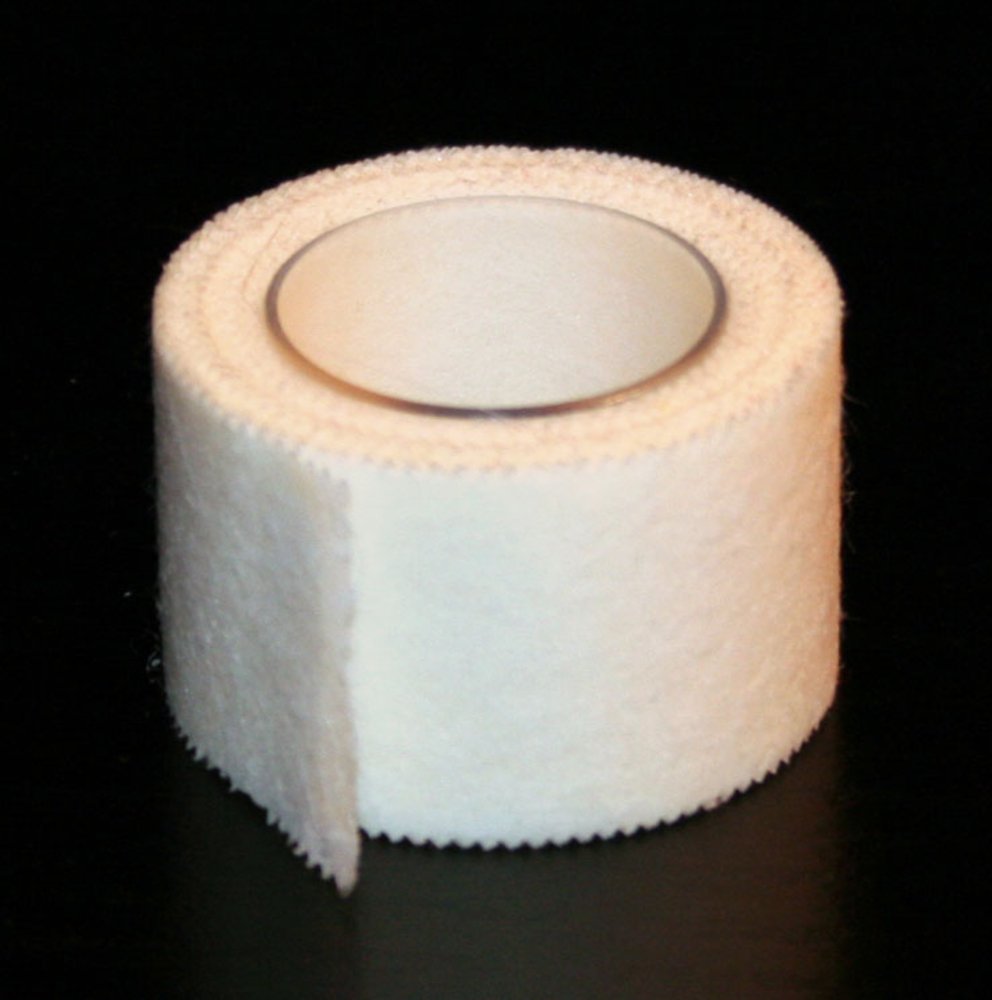 Now scientists at Harvard medical school has found a way to produce a "quick release" form of tape that is extremely strong but can even be peeled away from delicate origami paper without ripping it.
Now scientists at Harvard medical school has found a way to produce a "quick release" form of tape that is extremely strong but can even be peeled away from delicate origami paper without ripping it.
Michael Karp and his colleagues, writing in PNAS, have hit upon the idea of introducing a non-stick silicon polymer "release layer", which is sandwiched inside the tape between the adhesive and the backing. This is designed to break when minimal upward force is applied, allowing the backing and the glue to separate. The adhesive remains temporarily stuck to the skin after removal of the tape, but without the backing to spread the load it can readily be rubbed away with a little talcum powder.
The key to making the idea work was to use a laser to cut a grid pattern into the silicone release layer. This allows sufficient contact between the adhesive and the PET backing for the tape to work stably and resist forces at the skin surface, meaning that medical instrumentation and dressings are firmly held, but tugging upwards on the backing breaks its weak association with the adhesive and the two part company. And because the new tape is largely made of all the same materials routinely employed in medical tapes, and the laser technique is standard practice, scaling up production and introducing the new material clinically should be simple.
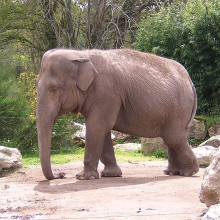
02:45 - Can Koshik the elephant talk?
Can Koshik the elephant talk?
Dumbo the elephant may have been able to fly, but he was fictional. Now a team of German, US, Korean and Sri Lankan researchers believe that they may have found an elephant that can talk - or at least make vocal sounds that convincingly resemble human speech.
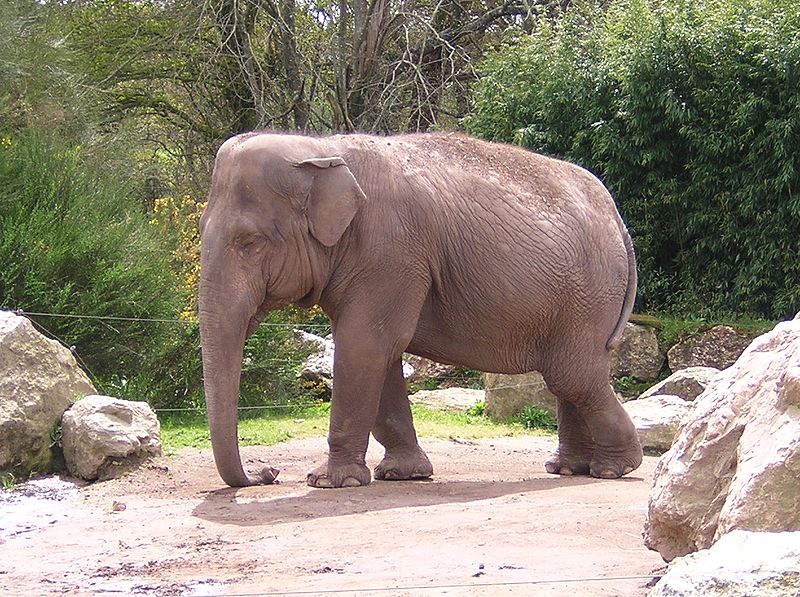 This talented animal is called Koshik, a 22 year old Asian elephant who was born in captivity and moved to Everland Zoo in South Korea when he was just three years old, though he has been the only elephant in the zoo since 1995. Writing in the journal Current Biology this month, Angela Stoeger and her colleagues, recorded clips of Koshik making unusual noises which his trainers thought sounded like Korean words, and played them to 16 different native Korean speakers, to see if they could pick out which words he was apparently saying. The scientists found that Koshik can imitate at least 5 Korean words pretty well, including hello ("annyong"), no ("aniya") and sit down ("anja"), although his vowel sounds are much better than his consonants.
This talented animal is called Koshik, a 22 year old Asian elephant who was born in captivity and moved to Everland Zoo in South Korea when he was just three years old, though he has been the only elephant in the zoo since 1995. Writing in the journal Current Biology this month, Angela Stoeger and her colleagues, recorded clips of Koshik making unusual noises which his trainers thought sounded like Korean words, and played them to 16 different native Korean speakers, to see if they could pick out which words he was apparently saying. The scientists found that Koshik can imitate at least 5 Korean words pretty well, including hello ("annyong"), no ("aniya") and sit down ("anja"), although his vowel sounds are much better than his consonants.
How's he making these noises - elephant mouths are quite different from our own, aren't they?
An elephant's mouth is very different from our own, and their vocal tract is much longer than ours. To imitate the sound of human speech, Koshik puts the tip of his trunk into his mouth to change the shape of his vocal tract - something that's never been seen in an elephant before. And the only other animals that are known to change their vocal tracts in this way are orangutans, who use their hands or leaves to change the sounds they can make.
Why would animals imitate human speech? Are there any other animals that can do this?
This is the first documented example of an elephant mimicking human speech -although there are unconfirmed reports of an elephant in Kazakhstan that could "say" Russian and Kazakh words - there are a few other animals that can imitate speech. Two obvious examples are Mynah birds and parrots, but there's also the case of Hoover the seal, who was taught human phrases by a fisherman, and Logosi the beluga whale who could say his name. Interestingly, attempts to teach chimps to imitate human speech have mostly failed, even though their vocal apparatus is similar to our own, suggesting that it's not the equipment that an animal has that's important for mimicking human speech, but something to do with the way their sound perception and production pathways are wired up to the brain.
As to why animals might imitate human speech, it's hard to know. The researchers suggest that the fact that Koshik was reared in captivity, and has been the only elephant in the zoo for a long time may have something to do with it. In the wild, animals including elephants mimic each other's vocal sounds as part of forming social bonds and groups, so maybe Koshik is just trying to bond with his keepers.
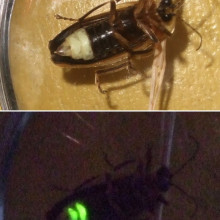
05:44 - Fireflies inspire brighter LED's
Fireflies inspire brighter LED's
The light-emitting tails of fireflies have revealed a way for scientists to create more efficient LEDs. By studying the tails of the firefly Luciola lateralis under an electron microscope, Korean researchers noticed that the surface layers of the parts of the insects' bodies that illuminate when they power up their internal lanterns are shaped very differently from those covering the rest of the abdomen.
Non-illuminating regions of the firefly body show a surface contour that lacks 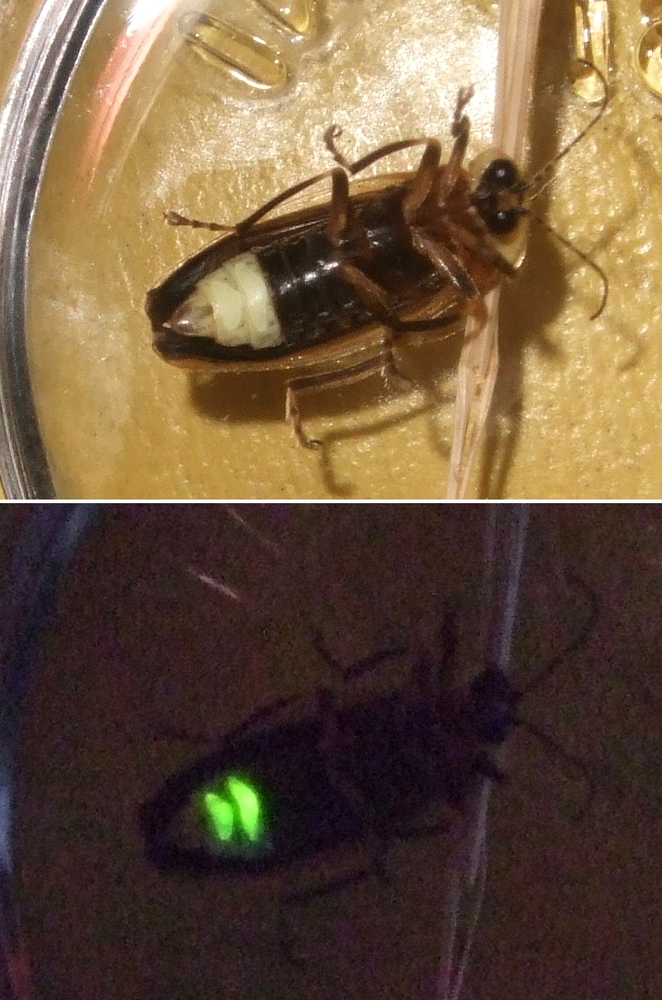 any obvious regular shape or pattern, Jae-Jun Kim and his colleagues at the Korea Advanced Institute of Science and Technology found. But the lantern segments were covered in a series of straight ridges and folds running in parallel and each about 1/7000th of a millimetre high.
any obvious regular shape or pattern, Jae-Jun Kim and his colleagues at the Korea Advanced Institute of Science and Technology found. But the lantern segments were covered in a series of straight ridges and folds running in parallel and each about 1/7000th of a millimetre high.
This structure, the team have shown, works in the same way as the anti-reflective coatings added to camera and telescope lenses and ensures very efficient light extraction from the insect's light organ into the air. Because LEDs are structured similarly to the firefly lantern, with a light source placed in front of a reflective layer and with a lens in front to funnel out light, the team wondered whether equipping LEDs with the same surface structure as the firefly tail could make for brighter LEDs.
By etching silicon, they created the equivalent of a nano-patterned jelly-mould capable of reproducing plastic LED lenses with surfaces mimicking the nanostructures on the firefly's tail. Added to LEDs, these insect-inspired lenses were immediately 3% brighter than the traditionally constructed counterparts.
"This biological inspiration can offer new opportunities for single step and low-cost moulded lenses with high transmission power in high-power LED applications, such as liquid crystal display backlight units, mobile camera phone flashes, automotive, domestic and medical lighting,"
say the team, in their paper published this week in the journal PNAS.
http://www.pnas.org/content/early/2012/10/25/1213331109
doi: 10.1073/pnas.1213331109

08:04 - The Benefits of Breast Cancer Screening
The Benefits of Breast Cancer Screening
Professor David Cameron, The Edinburgh Cancer Research Centre
Is breast cancer screening beneficial? A paper in the Lancet this week examines the pros and cons...
Professor David Cameron at Edinburgh University is one of the authors on that paper.
David - There has been for some time, a controversy in the area of whether women should undergo regular mammographic screening to try and pick up cancers before they are obvious to the patient or the doctor. The controversy has really ended up with two polarised views. One saying, this process works. It prevents women dying earlier of breast cancer and another view that says, it picks up lots of cancers that never needed to be found, doesn't make much difference to whether women survive breast cancer and therefore, should be stopped.
Chris - So you were then consigned the unenviable task of looking at this data to try to answer that question. Not an easy job to do. How did you do it?
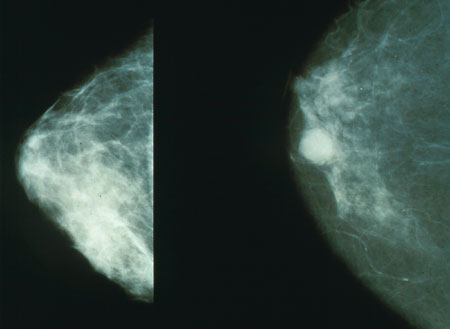 David - We focused on two key points. What were the mortality benefits and what were the harms? Particularly the harm of what's called 'over diagnosis' and that is a technical term. What it means is a cancer that is found through screening, that is a real cancer, but it's a diagnosis of a cancer that would not have otherwise come to light or cause clinical problems in a woman's lifetime.
David - We focused on two key points. What were the mortality benefits and what were the harms? Particularly the harm of what's called 'over diagnosis' and that is a technical term. What it means is a cancer that is found through screening, that is a real cancer, but it's a diagnosis of a cancer that would not have otherwise come to light or cause clinical problems in a woman's lifetime.
Chris - How do we know that a cancer detected at stage X would not have killed that person?
David - For an individual woman and then for her individual cancer, we cannot. And so, you can only deduce the existence of this group of cancers through the analysis of pooled data, either from randomised trials or from observational studies.
Chris - And how did you do that?
David - The approach we took was to first go back to randomised controlled clinical trials. The big advantage of a randomised trial is that provided it's reasonably well-designed. The only difference between the two groups of women is whether or not they have mammographic screening.
Chris - Because what one doesn't want to do and this has been a certain criticism levelled that some of the data from America for example with things like prostate cancer, where America is extremely proactive about screening people and then diagnosing, and treating people with prostate cancer, people have said there's a lead time bias. You diagnose people and actually, you look like you're achieving an incredible response rate, but were those cancers not picked up until later and then treated anyway, the people would have ended up with the same outcome.
David - Exactly and we did look at quite a lot of observational data and some of the observation studies have been very well conducted in a sense that the authors have tried everything they can to control for things like lead time and underlying differences in breast cancer incidents. But they all tend to rely on some key assumptions including what would have happened in that population, had breast screening not been conducted. We did an interesting modelling exercise changing various assumptions, but working on the same dataset, and showed you could draw quite different conclusions.
Chris - How did you draw the conclusions that you did?
 David - Let me address the question of how we came to the conclusion that breast cancer screening does reduce the mortality for breast cancer. We took the hazard ratios for breast cancer screenings from these trials where we had 13 years of patient follow up after the end of the trial. Because if you're going to catch a cancer early in order to reduce a chance of a woman's dying, you need to measure her risk of dying from breast cancer. Not just during the trial, but for many years after. Now, our conclusion was that there was a 20% reduction in breast cancer mortality in these trials.
David - Let me address the question of how we came to the conclusion that breast cancer screening does reduce the mortality for breast cancer. We took the hazard ratios for breast cancer screenings from these trials where we had 13 years of patient follow up after the end of the trial. Because if you're going to catch a cancer early in order to reduce a chance of a woman's dying, you need to measure her risk of dying from breast cancer. Not just during the trial, but for many years after. Now, our conclusion was that there was a 20% reduction in breast cancer mortality in these trials.
Chris - How many lives saved does that turn into?
David - Well, what we then did was to say, let's look and see what happens in the UK where we have a 20-year breast cancer screening programme for women, age 50 onwards. We took their risk of dying of breast cancer between the ages of 55 and 79, and so, we back-extrapolate it to work out what the mortality would be without that 20% reduction, which works out at about 1300 women a year not dying from breast cancer because of breast cancer screening.
Chris - What about the converse which is, people have picked on the number which has appeared in the paper in the Lancet saying, "Look, there are thousands of people who are now having interventions that they needn't have done." What can we say about that group?
David - We took the same approach. We started with our randomised trials, but critically, if you're going to measure over diagnosis, you need to have a control group who are never screened, and many of the studies offered or systematically screened the women in the control arm at the end of the trial. So we took the only trials where there was no exit screening. So that left us just 3 trials to look at for our estimate of over diagnosis. So we took these 3 trials and we estimated the risk of an over diagnosed cancer and our conclusion was that in the UK approach to screening, that about 19% of the cancers found during the time of screening would be an over diagnosis. That translates to a figure of about 4,000 women a year, but the precision of that figure is less than the precision for our mortality benefit. But nevertheless, it is a real number of patients who have a cancer that they didn't need to know about.
Chris - And what are the implications of these numbers?
David - The significance of the over diagnosis number is firstly that women need to be aware that this is a risk or a price that they have to pay if they're going to undergo screening. They may have something found that wasn't necessary to be found. However, we can never work out who they are, so they need to continue to be treated exactly the same way. But it offers an opportunity for research to further explore how we could identify these cancers that we didn't need to discover. From the mortality point of view, our primary conclusion was that the breast cancer screening programme should continue because we felt 1,300 lives a year was well justifying the continuation of the breast cancer screening programme. But the women, when they're invited, should therefore be given a bit more information about the down sides, the harms, and more open discussion about the treatment options when something is found.
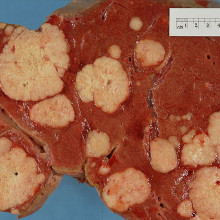
14:13 - A Window on Spreading Cancer
A Window on Spreading Cancer
Dr Jacco van Rheenen, Hubrecht Institute
Kat - Most deaths from cancer occur when the disease spreads or metastasises to other parts of the body and we've already discussed about what might be going on at a molecular level, but we don't really know what's going on at a physical level. What does it actually look like?
Now, a team from Hubrecht Institute in the Netherlands have developed a technique to allow them to peer into organs within the body and watch metastasis taking place. This gives us really important clues as to how it happens and potentially, a way to find drugs to stop it.
We're joined by Dr. Jacco van Reenen. He's one of the scientists behind the work. Hello, Jacco.
Jacco - Hello.
Kat - So, tell me a bit about why you decided to do this. Why can't we look at cancer spreading right now?
Jacco - So, the big problem is that you would like to see which cells are growing out and not. What we did before is, we took for example a biopsy or tissue sections and we just visualised on the microscope and we look through the cells. That gives you just a snapshot, so you can for example see a thousand cells that arrive in the liver, but you have no idea which cells will grow into tumours or not. Of course, you can also look at later stages and then you can see the tumours that grew out. The problem there is that you have no idea which cells didn't make it and why they didn't make it. So, what we now did is, we developed a technology where we labelled the tumour cells in mice and we could see on the microscopes how these tumour cells arrive in the liver and how they grow out into a full metastasis.
Kat - So this is real-time imaging of cancer spreading. How does it work? How can you actually see into a liver, you're doing this in mice I guess?
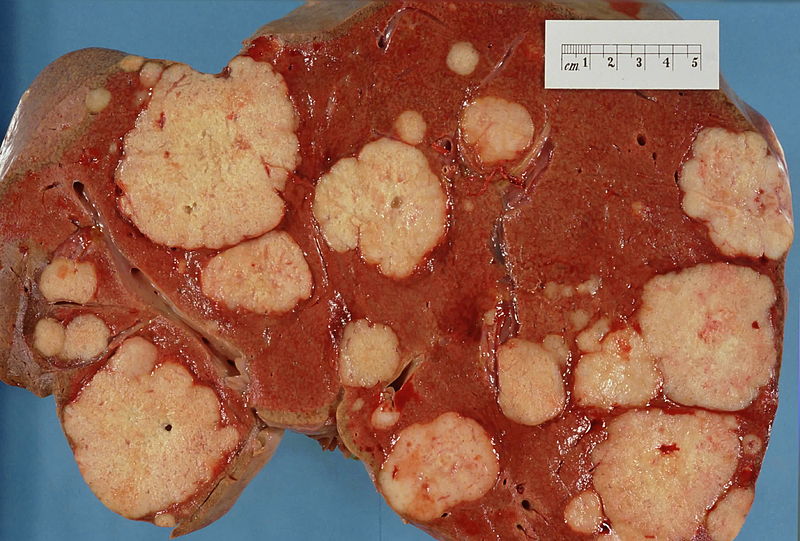 Jacco - Yes. So, you can just think of an airplane. If you look through an airplane and you would like to see inside the airplane, you do not see anything because the light from within the airplane doesn't penetrate the wall of the airplane. However, if you now go to the little windows of the airplane, you look through the glass, you'll certainly see exactly what's going on there. We do exactly the same, so we invented a little window which is held in a titanium ring with a small piece of glass. And it's very small, but we can implant into the belly of a mouse. Through this little window, we can see what's going on inside this mouse, and we can start really to visualise the individual cells that arrive in the liver and how they grow out.
Jacco - Yes. So, you can just think of an airplane. If you look through an airplane and you would like to see inside the airplane, you do not see anything because the light from within the airplane doesn't penetrate the wall of the airplane. However, if you now go to the little windows of the airplane, you look through the glass, you'll certainly see exactly what's going on there. We do exactly the same, so we invented a little window which is held in a titanium ring with a small piece of glass. And it's very small, but we can implant into the belly of a mouse. Through this little window, we can see what's going on inside this mouse, and we can start really to visualise the individual cells that arrive in the liver and how they grow out.
Kat - So tell me about some of the things that you can see through these tiny, tiny windows on cancer.
Jacco - So for example, what we observed is that the tumour cells that arrive, not every tumour cell is growing out, but what we observed at the ones that grew out, they leave the blood vessels and they migrate a little bit and then they start to grow. What you would expect is that if a tumour cell starts to grow, you expect a little bowl of cells that is growing and growing, and growing. But surprisingly, what we observed is that the cells that start to appear after a few rounds of multiplications is that the cells do not stick together. They don't form a very dense little bowl, but they more form a larger bowl where the cell density is very low. And then slowly over time, this tumour condenses slowly and if you then visualise over time, then you see the behaviours of the tumour cells in the different stages, in the early stages where the cells are not really connected to each other, they're very motile. We found that if you block this motility, that this really blocks the growth of this tumour into a bigger tumour.
Kat - So the key is actually the movement, not just the division or multiplication of the cells.
Jacco - Well, we actually observed that these two things are connected. So, if you are able to use drugs that block this movement of these cells, you also block the growth of these cells. And we use drugs that, if we look through cell cultures, if we use this drug you can see that it stops. They still proliferate. If we now look in vivo, inside the mouse and we see at these very early stages and use the same drug, you can see that the cells stop moving, but they also stop proliferating, so it stop growing.
Kat - What do you think these experiments could tell us about how cancer may be spreading in humans? Do you have hope that these same drugs or developing these chemicals you're testing into drugs, could potentially stop cancer spreading in humans?
Jacco - Well, I think the most important thing is that this is fundamental research, right? So, we have many questions that we just would like to answer. So how is a tumour cell growing to metastases? Our research is just proof of principle, and we see now something new and whether it is holds true in humans, we have to do much more research of course [to find out]. We did just one type of cancer. If you would really want to know what will help in the clinic, you have to find out whether this holds true in many types of cancer. But of course, with this technique and now, our new technology, we have now the ability to really search for drugs that can block potential new drug targets that we could never really look or investigate before.
Kat - And finally, how did it feel when you actually got this to work?
Jacco - That was really amazing. You just think about it all the time. You really think about static images, so you think that that's a tumour cell and they're just growing, but you have no idea what's going on there. And when I saw that for the first time, that you really see it moving, that you really can see how it's growing, of course, it was very exciting, but kind of terrifying as well because you realise that the mechanism that you see is causing the death of many people. So, scientifically, I was very excited, but as just a human being, it was kind of terrifying as well.










Comments
Add a comment